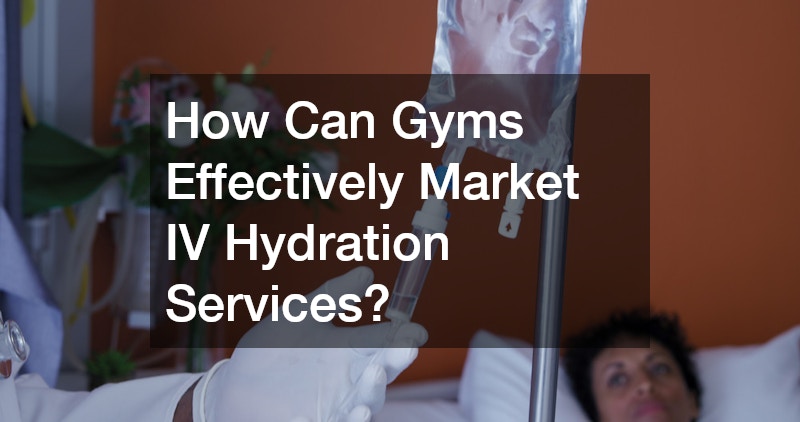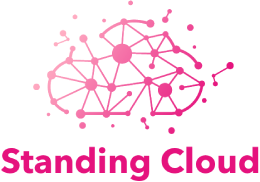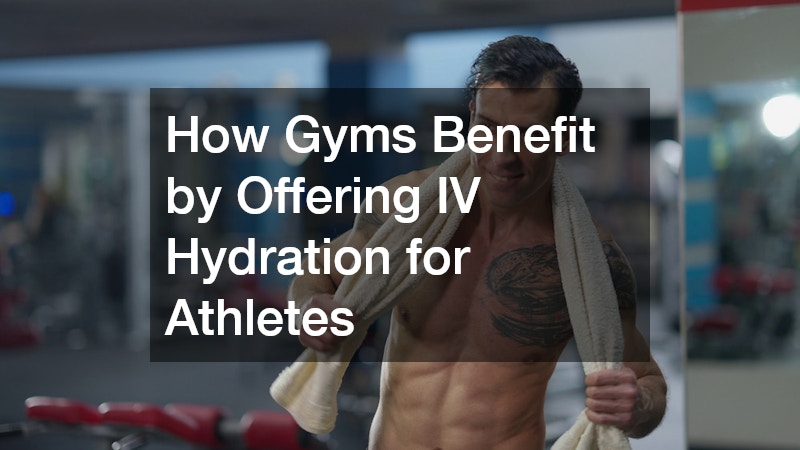In recent years, IV hydration therapy has gained popularity as a service offered by gyms to support athletes. This article explores how gyms can benefit from incorporating IV hydration for athletes into their offerings and answers some common questions surrounding this practice.
What is IV Hydration, and Why is it Gaining Popularity Among Athletes?
Understanding IV Hydration
IV hydration for athletes involves delivering fluids and essential nutrients directly into the bloodstream via an intravenous drip. This method ensures rapid absorption of the solution’s components, making it an efficient way to replenish the body.
Common components of IV hydration solutions include saline, electrolytes, vitamins, and sometimes amino acids. These elements work together to support hydration, recovery, and overall well-being, especially after intense physical activities.
This therapy was initially reserved for clinical settings but has become more accessible thanks to its success in treating dehydration-related ailments. As a result, many athletes are turning to IV hydration for its quick and effective benefits.
Reasons for Popularity
Many athletes find IV hydration appealing because it can reduce downtime between workouts and competitions. By quickly rehydrating the body, athletes can maintain peak performance and reduce muscle soreness.
Athletes also appreciate the customizable nature of IV therapies, which can be tailored to individual needs with specific vitamins and minerals. This personalization allows for targeted recovery and performance enhancement, making it a popular choice among serious gym-goers.
Additionally, the rapid onset of effects makes IV hydration a preferable option over traditional oral rehydration methods. With results often felt within minutes, athletes gain a competitive edge in both training and events.
How Does IV Hydration Enhance Athletic Performance?
Immediate Rehydration Effects
The primary advantage of IV hydration for athletes is its ability to provide immediate rehydration, crucial for maintaining muscle function. By quickly restoring fluids and electrolytes, athletes can prevent cramps and improve endurance.
Rapid rehydration also supports faster recovery by reducing inflammation and aiding in the removal of metabolic waste products. This process helps athletes return to peak condition in less time, facilitating more frequent and intense training sessions.
For example, IV therapy can significantly reduce post-exercise muscle soreness, allowing for quicker repetition of training activities. Consequently, athletes can push their limits and reach new performance heights without prolonged recovery periods.
Nutrient Delivery for Performance Boost
Beyond hydration, IV therapy supports athletic performance by delivering vital nutrients like B vitamins, magnesium, and calcium. These nutrients play critical roles in energy production, muscle function, and acid-base balance.
This process ensures that the nutrients bypass the digestive system, which can often degrade or eliminate them before they reach the bloodstream. By guaranteeing precise delivery, athletes can experience the full benefits of nutrient absorption.
Tailored IV solutions can also include antioxidants such as vitamin C, which supports the immune system and reduces oxidative stress. Immunity plays a key role in overall health and performance, and maintaining it enhances an athlete’s capacity to train and compete.
Are There Economic Benefits for Gyms Offering IV Hydration?
Attracting New Clients
By offering IV hydration services, gyms can attract a broader clientele looking for specialized recovery options. Athletes and fitness enthusiasts seeking cutting-edge methods for performance enhancement are particularly drawn to these services.
This additional offering allows gyms to promote themselves as holistic wellness centers, catering to a variety of health and fitness needs. By standing out in a competitive market, gyms can increase their membership base and foster long-term client relationships.
Word-of-mouth referrals increase as athletes experience the benefits of IV therapy, further expanding the gym’s reach. As satisfied clients share their positive experiences, the gym’s reputation as a comprehensive fitness hub grows.
New Revenue Streams
Incorporating IV therapy not only draws more members but also generates additional revenue streams for gyms. By charging fees for each session, gyms can capitalize on the increasing demand for advanced fitness recovery services.
Conducting partnerships with licensed medical professionals to deliver these services ensures quality and compliance, boosting client trust and satisfaction. This collaboration allows gyms to seamlessly integrate IV therapy without excessive operational changes.
Offering packages and discounts for members who opt for multiple sessions can further boost profitability. These incentives encourage athletes to make IV therapy a regular part of their fitness routine.
What Are the Health and Safety Considerations?
Ensuring Safe Administration
Safety is paramount when it comes to administering IV hydration for ahtletes, particularly in non-clinical settings like gyms. Gyms must adhere to strict protocols and employ qualified healthcare professionals to administer the therapy.
This includes maintaining a sterile environment, using disposable equipment, and monitoring clients during the procedure. Ensuring that all staff are adequately trained minimizes the risks associated with IV therapies.
Identifying Suitable Candidates
Not everyone is an ideal candidate for IV hydration for athletes, and gyms must be vigilant in screening clients before offering these services. Health assessments should be conducted to determine candidacy based on individual health profiles and fitness goals.
Commonly, athletes who are undergoing intense training, participating in endurance sports, or experiencing severe dehydration are ideal candidates. Proper evaluation ensures that those undergoing therapy will gain the most benefits without unnecessary risks.
How Can Gyms Effectively Market IV Hydration Services?
Target Audience Analysis
Identifying the right demographic is crucial for effectively marketing IV hydration services. Athletes engaged in competitive sports, endurance events, and high-intensity interval training are among the most likely candidates.
Additionally, those who frequently travel or have a high-pressure lifestyle may also benefit from quick rehydration and energy-boosting effects. Understanding these target groups facilitates tailored marketing efforts that effectively reach potential clients.
Creating Compelling Campaigns
To promote IV hydration services, gyms should develop informative and engaging campaigns that highlight the benefits for athletes. Utilizing testimonials, case studies, and visual content can effectively convey the impact of these services.
Collaborating with influencers and sports professionals who endorse the therapy can enhance credibility and widen audience reach. Their testimonials offer real-life validation and inspiration for potential clients to try these services.




